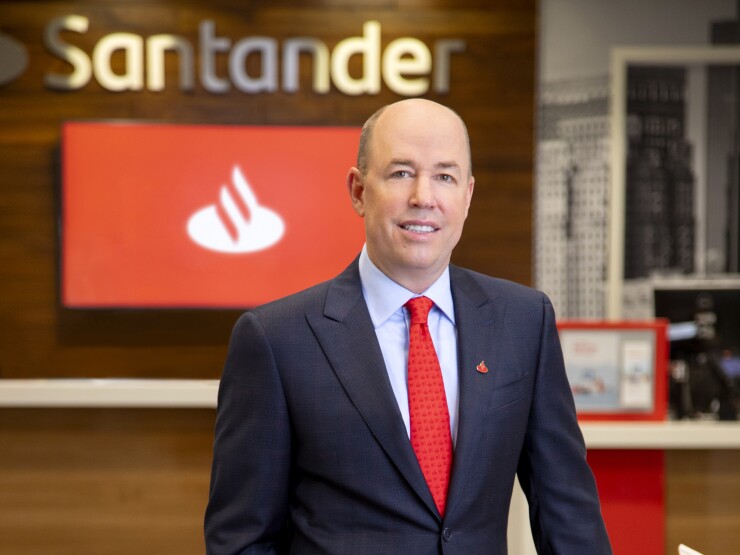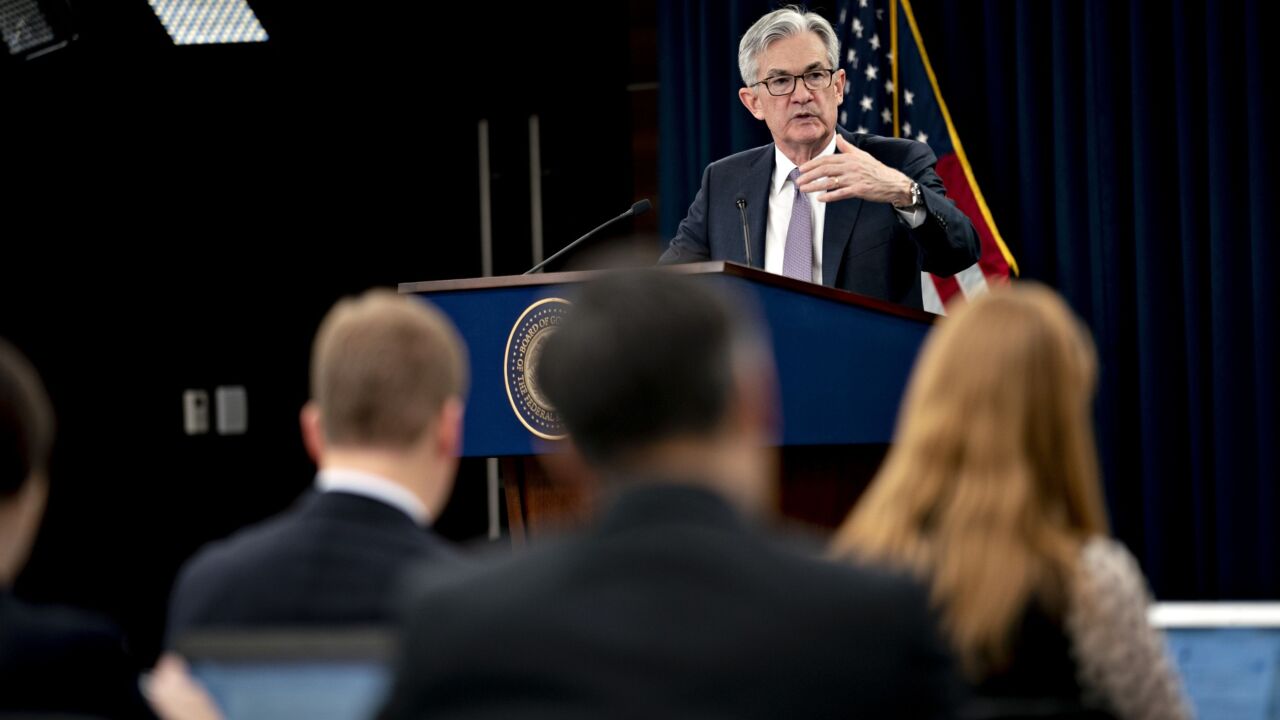Ramp up personal lending. Roll out a digital bank. Cater to internationally minded business clients. Tim Wennes has been the CEO of the U.S. arm of the Madrid-based Banco Santander for less than a month, but his to-do list is already a long one.
For starters, Santander will launch an unsecured consumer loan early next year both online and in its branch network. Wennes framed that explicitly as a play to keep up with fintech lenders, while also offering customers a debt consolidation product.
“That’s been a gap in our offering,” the CEO of Santander Holdings USA told American Banker in a recent interview. “We didn’t feel our offering, from speed to delivery, was as efficient as clients would like, and now we’ve put together something we think will be attractive in terms of same-day funding.”
Santander will also roll out a

Wennes
Powell had devoted much of his time at Santander to
Wennes emphasized that risk management remains a priority. But in a recent interview with American Banker, he also talked about where Santander goes from here and shared some insight into succession planning on a tight timeline. The following interview has been edited for clarity and length.
Q: Tell us more about the unsecured consumer loan. Who is it for? How do you expect customers will use it?
TIM WENNES: Today on average, it takes us five-plus days from application to funding with a personal loan. With our new platform and program, we can do same-day approval and funding. We’re piloting that right now and then we plan to roll that out to our branch network and then more broadly to our marketplace.
We’ve got 2 million-plus customers and many of those customers have borrowing needs. Many of them want to use their home as collateral…but there’s a significant number of consumers who have a small need for financing and don’t want to put their home up as collateral, or they don’t own a home and they want to get something quick.
Part of the reason this segment of the market is growing is that we’re at record levels of outstanding credit card debt, as an industry and as a nation. That’s really the proposition for clients: if you’ve got unsecured outstanding debt or credit card debt this may be a way for you to consolidate or lower your monthly costs and get this paid off more quickly.
Q: You’re also launching a digital consumer deposit product next year. What’s the thinking there?
We anticipate that in the future, we’re not going to be limited to just our footprint for deposit gathering. You see some of our competitors doing that, and that is part of our play there. Once we’re comfortable with the digital capabilities there, we will also consider going out of footprint.
The Santander brand resonates more strongly in other parts of the country than the Northeast. If you think about those areas where there’s more connectivity with Latin America or to Europe — Florida’s a good example or Texas — there’s additional opportunity for us to leverage the Santander brand beyond just our footprint.
Q: What does the commercial growth strategy look like?
We have a very strong and mature commercial real estate business here. That business is very strong. The size and scale of our commercial business, we feel, is undersize for our footprint and our size bank. Right now, our commercial real estate book is about double the size of our commercial business. Over time we’d like to see those be closer to equal or about even.
As we look to 2020, we’d like to expand share in both the middle market and mid-corporate space. In the mid-corporate space, over the past 18 months, we’ve opened up some offices in Miami and Chicago and Dallas where we are focused on mid-corporate sized companies — companies between $500 million and $2 billion in revenue — that have international needs.
We’re a part of Santander Group, one of the 15 largest banks in the world, and we have a very significant presence in Latin America, Central America, Mexico and Europe. So we’re focusing on businesses that have operations in those areas. We’ve got an international desk set up here that’s connected with our affiliates so we can get our clients direct assistance if they’ve got a subsidiary or if they’re doing business in those areas.
Q: What was the succession planning process like in this situation?
This came quickly, but it’s a testament to the work the executive team, the board and the group have done around succession planning. Beyond me, if you look at the announcements over the summer and in the fall here, the CEO of the bank, Duke [Dayal], he became CFO in the U.K. Then [Juan Carlos] Alvarez, who was the CFO at Santander Consumer, he moved over as CFO of Santander Bank and the holding company. That gets back to talent assessment and talent planning. I think the group has done an exceptional job of that.
I came in as the CEO of the bank and when the group was interviewing candidates, they wanted to bring in someone who would be ready to take on more, should that happen. It happened much more quickly than anticipated. I think the plan has worked and we’re in a very good position to continue the path we’ve been on.




